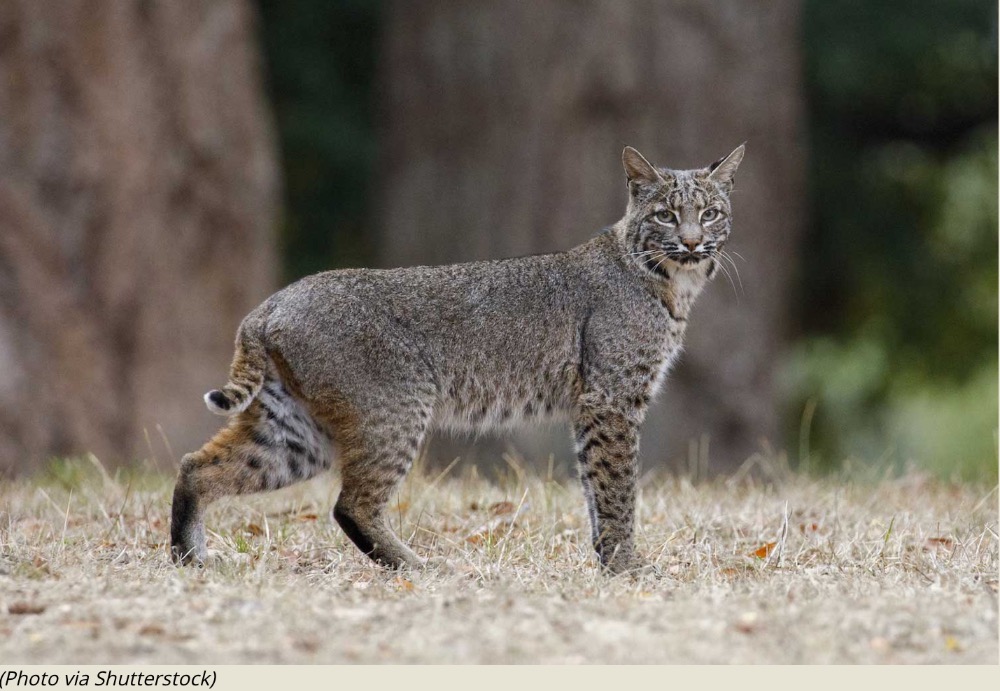Arizona Wildlife
Rattlesnake 
Spring in Arizona is the perfect time to enjoy the beautiful weather and outdoor activities. The desert also holds some hidden dangers that you may encounter along the way.
March through October is considered rattlesnake season in Arizona, and knowing how to avoid a dangerous rattlesnake encounter for both you and your pets, and what to do if you do get bit, can be the difference between life and death.
Home Safety
- Eliminate rodents from your property, since they are a major food source for all types of snakes
- Cover drainage holes with a quarter-inch hard wire screen
- Perimeter walls and fences around your property should be solid, a minimum of four-feet high, with no holes or areas for them to tunnel underneath.
Javelina

Javelina will likely visit occasionally if you live in a semi-urban area near a wash or other natural desert. Javelina usually cause only minor problems for people by surprising them or eating a few plants. However, people should NEVER feed javelina. This can cause them to become regular visitors and lose their fear of people, creating problems for the neighborhood and often leading to the death of the javelina. Javelina occasionally bite humans, but incidents of bites are almost always associated with people providing the javelina with food. Javelina can inflict a serious wound. Defensive javelina behavior may include charging, teeth clacking, or a barking, growling sound. Javelina may act defensively when cornered, to protect their young, or when they hear or smell a dog. Dogs and coyotes are natural predators of javelina, and they can seriously hurt or kill each other. Javelina around your home may also inadvertently attract mountain lions, because mountain lions prey on javelina.
Bobcat
If you see a bobcat near your home, there is no need to panic. Bobcats rarely attack people, and most human attacks have been related to rabies. It is more likely that bobcats are attracted to your yard because it has abundant wildlife, domestic birds, small pets, water, and shade or other shelter. If you have small pets, they need to be protected from bobcats and other predators. Keep small pets indoors, in an enclosed area with a roof, or on a leash when outside (a 6-foot tall fence is not necessarily good protection as bobcats are good jumpers and climbers). Domestic birds should be kept in an enclosed area with a sturdy roof, and do not spread seed that attracts other wildlife. Feeding bobcats, whether intentionally or inadvertently, can encourage them to become too comfortable around humans which may result in conflicts.
Although their numbers are declining because humans encroach their natural habitat, bobcats are Arizona's most common wild feline, outnumbering the mountain lion. The bobcat is a medium-size cat weighing 12 to 30 pounds with an average adult length of 2 to 2.5 feet. They are incredibly beautiful creatures that exist in varied colors from orange to gray with black markings similar to a domestic tabby cat. Their undersides are whitish and they have pointed ears with tufts at the end. A bobcat's tail is relatively short at about 5 inches which accounts for its name, "bobcat." They are often called "wildcats" as well.
Coyotes
Coyotes are curious, clever and adaptable, and will take advantage of any food source. Yards with abundant fruit on the ground, pet food, unsecured garbage cans or unattended pets such as small dogs and cats are often easy food sources for coyotes.
- Encourage your neighbors not to feed coyotes or leave anything out that might attract the animals.
- Feed your pets inside and never leave them unattended, especially at dusk and dawn when coyotes are most active. If it’s necessary to leave a small pet outside unattended, keep it in a sturdy enclosure with a roof.
Roadrunner
The most famous bird in the Sonoran Desert, without a doubt; the Roadrunner is also the most fictionalized in popular imagination. Cowboys used to tell tall tales about how Roadrunners would seek out rattlesnakes to pick fights, or would find sleeping rattlers and build fences of cactus joints around them. A later generation of Americans grew up thinking that Roadrunners were purple and cried “beep beep” as they sped about.

The Roadrunner is a very effective predator. Its speed on foot is not just for show: it captures not only snakes and large insects, but also fast-running lizards, rodents, and various small birds. Gambel’s Quail may pay scant attention to the Roadrunner at most seasons, but they react to it violently when they have small young, and with good reason: given an opportunity, the Roadrunner will streak in to grab a bite-sized baby quail.
Hummingbirds
There are at least a dozen species of hummingbirds in Arizona, the greatest variety of any state. You can see them year-round but April through October are the months with the greatest concentration, especially in southeastern Arizona.
But there’s no need to travel away from metro Phoenix to spot these colorful and high-energy birds. You can attract them to your yard or balcony by adding feeders and native plants to any outdoor space.
Arizona has at least 12 hummingbird species, some are seasonal, some are rare visitors and others are permanent residents.
According to the Arizona Bird Committee, Anna's hummingbirds can be seen in Arizona all year. Broad-billed, black-chinned, Costa’s, broad-tailed and rufous hummingbirds are seasonal, migrating between the U.S. and Mexico. The ruby throated hummingbird is rarely seen in Arizona, but is the only hummingbird that can be found in the Northeast.
Arizona Hummingbirds
Scorpions
Scorpions are predatory arachnids related to spiders, mites, and ticks. They are some of the oldest known terrestrial arthropods (animals with an external skeleton, a segmented body, and paired jointed limbs). Scorpions have an elongated body and a segmented tail that ends in a stinger that can deliver a venomous sting. They have four pairs of legs and pedipalps with plier-like pincers on the end, used for grasping
There are close to 2,000 described species of scorpions worldwide, at least 100 in the U.S., and more than 50 species in the desert southwestern states. Scorpions have long been of concern and interest to humans primarily due to their ability to give painful, and sometimes life threatening stings, but also because they are important and beneficial components of many ecosystems.
Pages
- Home
- Senior Lock Box
- Balera Community Page
- Fountain Hills Community Page
- Spa Redesign Project
- Arizona Wildlife
- Vendor List
- Marketplace
- Board Meeting Schedule
- 2024 Annual Meeting
- Calendar
- Friendly Neighbor Policy
- Amenities
- Governing Documents
- Homeowner Portal
- Submit Maintenance Request
- Submit Landscape Requests
- Submit Architectural Requests
- Board of Directors
- Meeting Minutes
- Monthly Financials
- Annual Financial Reports
- Reserve Study
- Gate/Amenity Access Codes
- GUD Community Management


